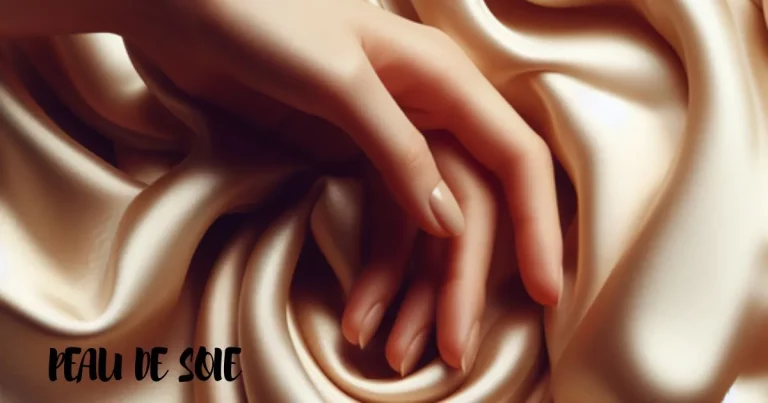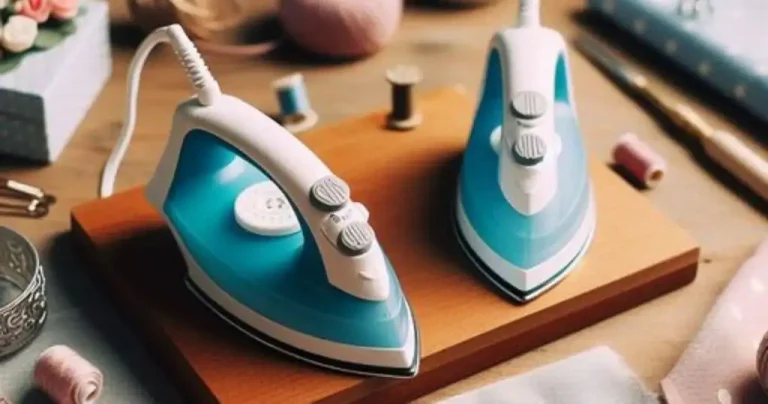Can You Dye Chiffon? A Complete Guide to Dyeing
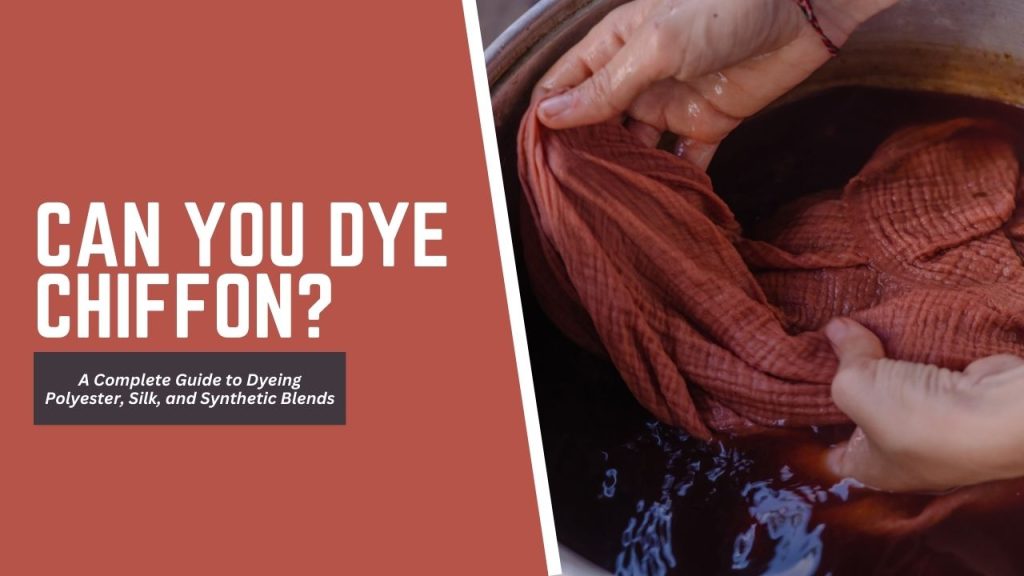
Yes, you can dye chiffon! While chiffon is typically known for its delicate nature, it can be successfully dyed to achieve the perfect hue for your project. The key to successful dyeing lies in choosing the right method and dye, depending on the type of chiffon you are working with.
For instance, polyester chiffon requires synthetic fabric dye, while silk chiffon can be dyed with acid dyes for vibrant results. Understanding the differences between polyester, silk, and synthetic chiffon blends is crucial for getting the best results, as each fabric responds differently to dye.
Chiffon fabric is a popular choice for fashion and DIY enthusiasts because of its lightweight, delicate texture, and luxurious appearance. Whether you’re making elegant dresses, stunning scarves, or beautiful home décor, chiffon offers versatility and beauty. However, one common question that often arises is whether it’s possible to dye chiffon fabric to match a specific design or color scheme.
At SewnScissors, we believe that everyone should feel confident in their creative projects, which is why we’ve created this detailed guide to help you master the art of dyeing chiffon fabric. Whether you’re looking to enhance the color of a polyester chiffon scarf or give new life to an old silk chiffon dress, this guide will walk you through everything you need to know to achieve professional-quality results.
Dyeing Chiffon Fabric Overview

What is Chiffon Fabric?
Chiffon is a delicate, lightweight fabric known for its graceful, airy appearance and elegant drape. Originally crafted from silk, this fabric has evolved to include synthetic fibers like polyester and rayon, making it both affordable and accessible for a wide range of creative projects. Despite its delicate nature, chiffon fabric remains a versatile choice for many designers, crafters, and DIY enthusiasts, especially for fashion and decor projects.
The Key Features of Chiffon: Texture and Transparency
Chiffon’s texture is soft and smooth, with a slightly sheer finish that adds an element of luxury to any design. Its flowing quality makes it an ideal choice for elegant dresses, scarves, and event decorations. When used in wedding gowns, bridesmaid dresses, or evening wear, chiffon exudes a feminine charm and an effortless sophistication.
For this reason, chiffon fabric for DIY projects has become increasingly popular for party decor, such as table runners, sashes, and even curtains, where its translucent look can create a soft, romantic ambiance.
Why Chiffon is Ideal for Dyeing
Because of its transparency, chiffon can be layered for a more dramatic effect or left sheer to showcase its fluid nature. This sheerness, combined with the fabric’s luxurious appeal, makes chiffon a favorite for both formal wear and high-fashion designs.
The fabric’s delicate structure also allows it to take dye beautifully, resulting in rich, vibrant colors that can transform any project.
Chiffon’s Versatility in Fashion and DIY Projects
At SewnScissors, we know that chiffon’s versatility is what makes it so appealing, whether you’re using it for a high-end fashion piece or a DIY event project.
The fabric’s ability to flow elegantly and its light, breezy texture provide endless opportunities for creative expression, especially when dyed to match specific color schemes or personal tastes.
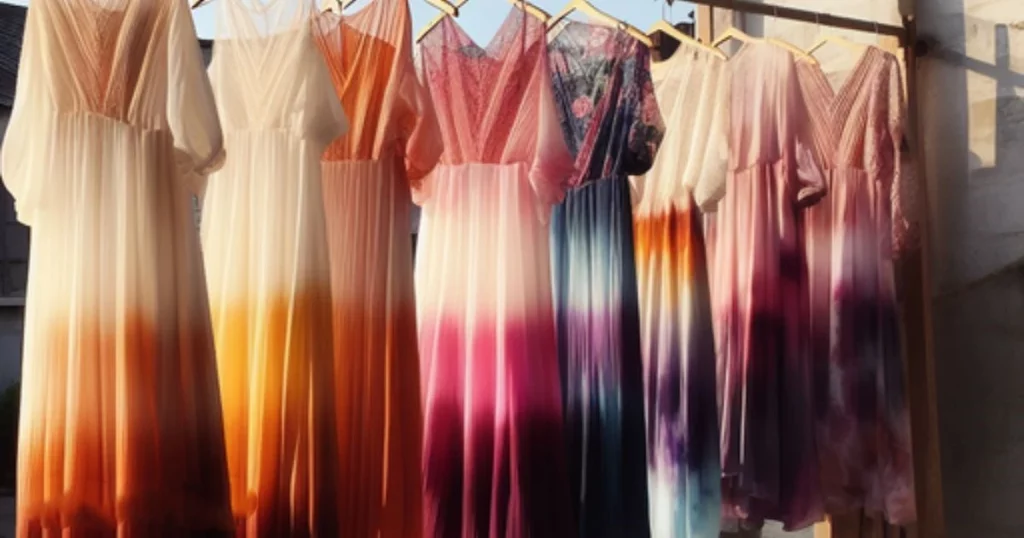
Types of Chiffon Fabric: Polyester, Silk, and Synthetic Blends
Polyester Chiffon: Characteristics and Best Dyeing Method
Polyester chiffon is a synthetic fiber known for its durability, wrinkle resistance, and affordability. While it’s less absorbent than natural fibers, this characteristic makes it more resistant to fading over time. Polyester chiffon is a popular choice for long-lasting garments and event decor, offering a smooth texture and slightly glossy finish.
Best Dyeing Method for Polyester Chiffon:
The best dyeing method for polyester chiffon involves using synthetic dyes, such as Rit DyeMore. These dyes are specifically designed to penetrate synthetic fibers and provide deep, vibrant colors. For optimal results, a stovetop method with high heat is recommended to ensure the dye adheres properly to the fabric. Polyester chiffon requires consistent heat during the dyeing process to achieve the desired color saturation.
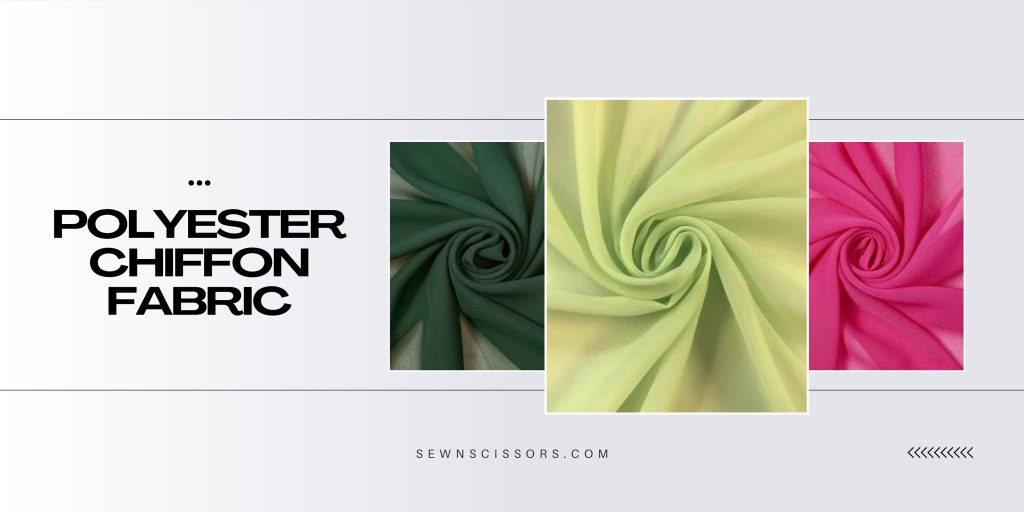
Silk Chiffon: Characteristics and Best Dyeing Method
Silk chiffon is known for its luxurious feel, soft texture, and beautiful sheen. Made from natural silk fibers, this fabric is breathable, lightweight, and ideal for creating high-end fashion pieces like wedding dresses and evening gowns. Silk chiffon offers a fluid drape and an elegant sheer appearance that is both delicate and striking.
Best Dyeing Method for Silk Chiffon:
For silk chiffon, the best dyeing method is using acid dyes, which are specifically formulated for natural fibers like silk and wool. Acid dyes, such as Jacquard Acid Dye, bond well with silk, providing vibrant and consistent color.
It’s important to avoid high temperatures, as silk is delicate and may get damaged by extreme heat. The stovetop method should be used at a low simmer to ensure the fabric maintains its luxurious texture and sheen.
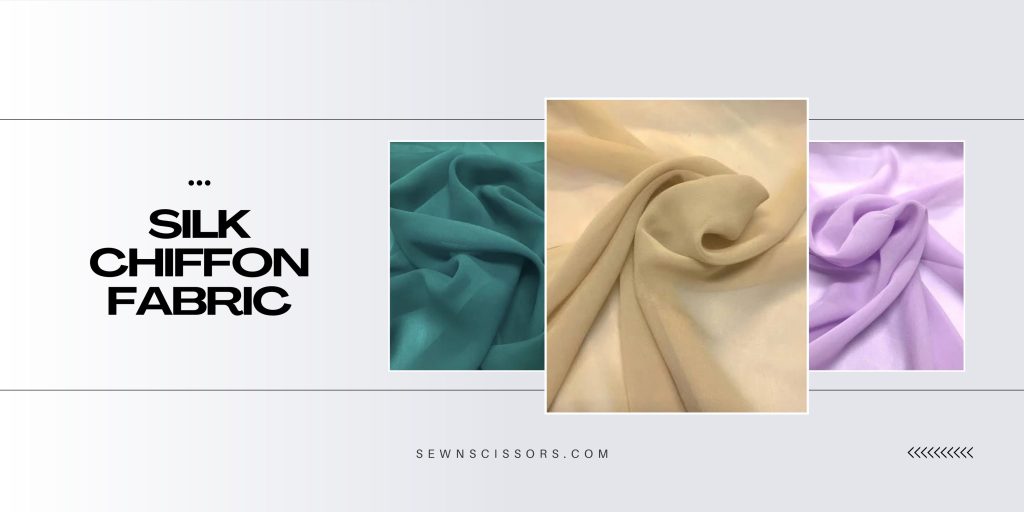
Synthetic Blend Chiffon (e.g., Rayon, Nylon): Characteristics and Dyeing Challenges
Synthetic blend chiffon fabrics, such as rayon chiffon and nylon chiffon, combine both synthetic fibers and natural fibers, resulting in a fabric that offers a balance of durability and breathability. These blends are often used in fashion and home decor because they provide a more affordable option compared to pure silk, while still offering the flowing drape that chiffon is known for.
Dyeing Challenges with Synthetic Blend Chiffon:
One challenge with synthetic blend chiffons is that they can be difficult to dye evenly. The synthetic components in the fabric can make it resistant to dye absorption, and the natural fibers may behave differently, resulting in uneven color. This can be especially noticeable if the blend contains a high proportion of polyester.
Best Dyeing Methods for Synthetic Blend Chiffon:
The best method for dyeing synthetic blend chiffon is a combination of synthetic dyes and acid dyes, depending on the fiber composition. A test swatch is recommended before dyeing the entire fabric to ensure even color distribution. Rit DyeMore for synthetics or Jacquard Acid Dye for mixed fabrics can be used for optimal results. It’s essential to follow the manufacturer’s instructions carefully to achieve the most consistent color.
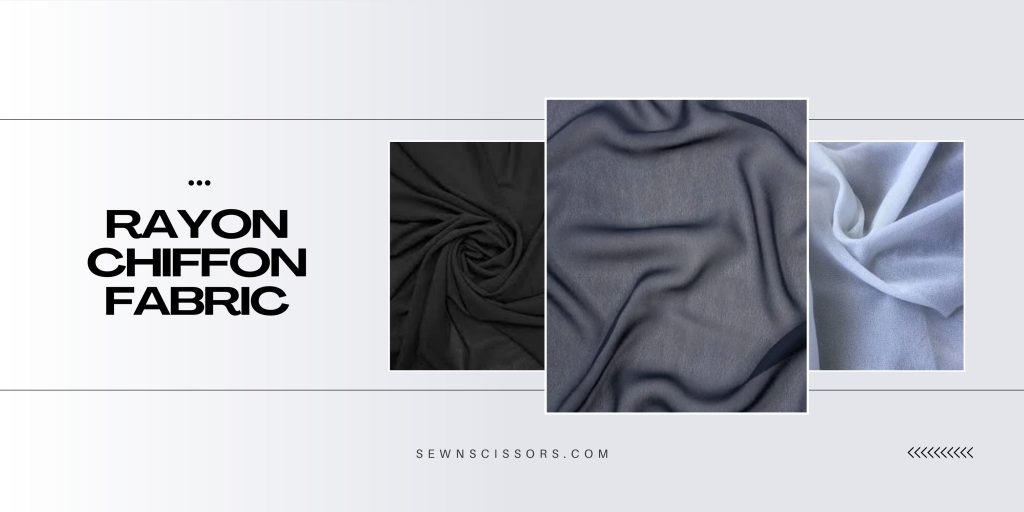
Step-by-Step Guide for Dyeing Chiffon
Follow this step-by-step guide to dye chiffon successfully, whether you’re working with polyester, silk, or synthetic blends. Be sure to test the dye on a small swatch of fabric before dyeing the entire piece to ensure you achieve the desired result!
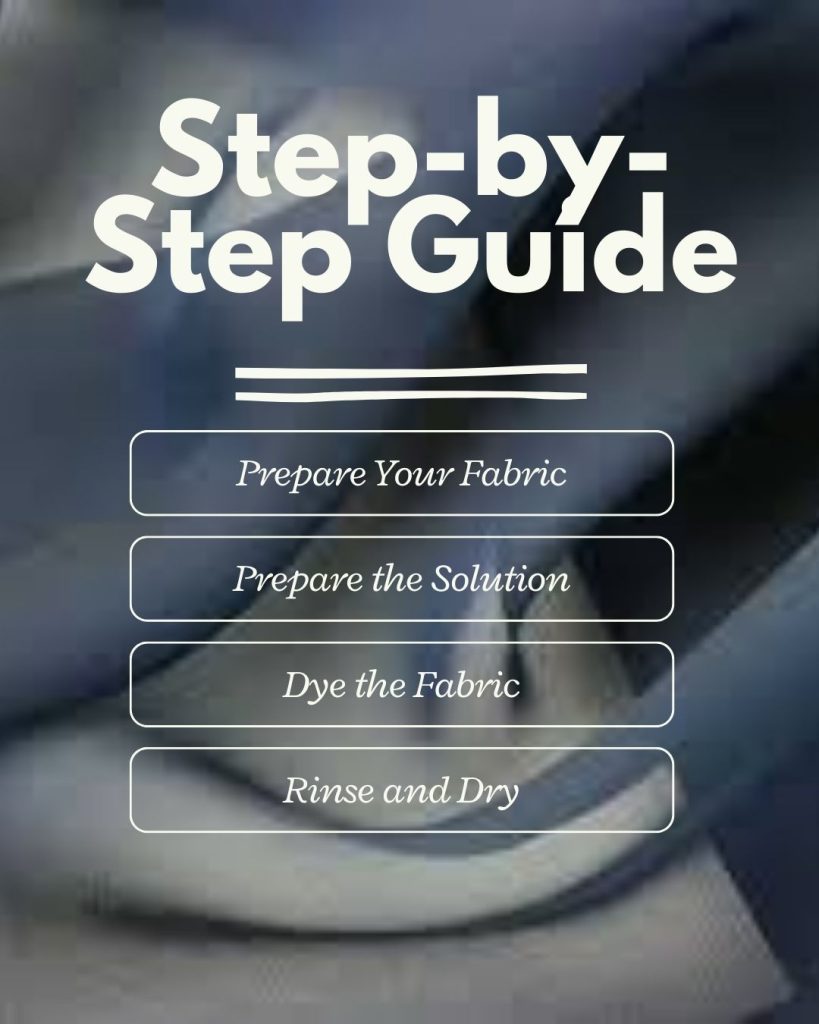
1. Prepare Your Fabric
The first step in dyeing chiffon is to prepare the fabric properly. Washing the fabric before dyeing ensures that it is free from any oils, dirt, or finishes that could prevent the dye from adhering well.
Washing Instructions for Chiffon:
- For Polyester Chiffon: Wash the fabric with warm water and mild detergent to remove any surface finishes. Polyester is less absorbent, so this step ensures that the fabric is ready to take the dye evenly.
- For Silk Chiffon: Silk is more delicate, so use lukewarm water with a gentle, silk-friendly detergent. Avoid hot water as it can damage the fibers.
- For Synthetic Blends: The washing instructions are similar to polyester chiffon. Use mild detergent and warm water, but check the manufacturer’s guidelines based on the specific fiber blend.
Once the fabric is clean, leave it damp (not soaking wet) so the dye adheres better during the next steps.
2. Prepare the Dyeing Solution
The temperature of the water is crucial to ensure the dye properly penetrates the chiffon fabric. Follow the instructions on the dye packaging to achieve the correct temperature for the fabric type.
Dyeing Solution for Different Fabrics:
- Polyester Chiffon: Use hot water (around 180°F or 82°C). Since polyester is a synthetic fiber, it requires high heat for the dye to bond properly.
- Silk Chiffon: Use warm water (around 100°F or 38°C). Silk requires a gentler approach to preserve its delicate texture and sheen.
- Synthetic Blend Chiffon: Follow similar instructions to polyester chiffon, using hot water but monitoring carefully to avoid over-heating, which can affect the fabric’s integrity.
Add the appropriate dye (synthetic dye for polyester, acid dye for silk) and mix thoroughly to ensure an even solution. If you’re looking for a deeper color, increase the amount of dye in the solution. Always use gloves and protect your surfaces from stains!
3. Dye the Fabric
Now that the fabric and dyeing solution are prepared, it’s time to dye the chiffon. Follow these steps for an even and successful dyeing process.
Step-by-Step Dyeing Instructions:
- Submerge the Fabric: Begin by wetting the fabric with water before adding it to the dye solution. Gently submerge the fabric into the dye bath, ensuring that the fabric moves freely in the water.
- Stir Continuously: To avoid uneven coloring, gently stir the fabric in the dye solution. Use a non-reactive spoon or stick to stir and keep the fabric moving, ensuring that every part of the fabric gets an even coat of dye.
- Dyeing Time: The time the fabric stays in the dye solution varies by fabric type:
- Polyester: 30 minutes is typically sufficient, but check for the desired color depth. Polyester needs more time in the dye bath to achieve deeper colors.
- Silk: Silk takes less time, typically 15-20 minutes, depending on the desired intensity. Check frequently to ensure the fabric doesn’t become too dark.
- Synthetic Blends: These may take 20-30 minutes, depending on the blend. Keep stirring to ensure the color develops evenly.
- Polyester: 30 minutes is typically sufficient, but check for the desired color depth. Polyester needs more time in the dye bath to achieve deeper colors.
Tip: If you are aiming for a lighter color, you can remove the fabric earlier. If you want a deeper, saturated color, leave it in the dye solution longer.
4. Rinse and Dry
Once the fabric has reached the desired color, it’s time to rinse and dry.
Rinsing Instructions:
- For Polyester Chiffon: Rinse the fabric in warm water until the water runs clear. Polyester retains dye well, so ensure all excess dye is removed.
- For Silk Chiffon: Silk should be rinsed gently in cool water. After rinsing, avoid wringing the fabric as this can damage the delicate fibers.
- For Synthetic Blends: Follow similar rinsing steps as for polyester chiffon. Use cool water and rinse thoroughly.
Drying Instructions:
- For All Fabrics: Lay the chiffon flat on a clean towel to absorb excess water. Do not wring or twist the fabric. Once most of the water is absorbed, hang the fabric to dry or lay it flat on a dry towel.
- Avoid Direct Sunlight: Do not dry the fabric in direct sunlight as this can cause color fading and damage to the fabric’s texture.
- For Silk Chiffon: After drying, iron on a low heat or steam the fabric to restore its smooth, elegant finish.
Important Tip:
Test the Dye on a Small Piece Before Dyeing the Entire Fabric! This ensures you get the desired color and prevents wasting fabric in case the results don’t meet your expectations.
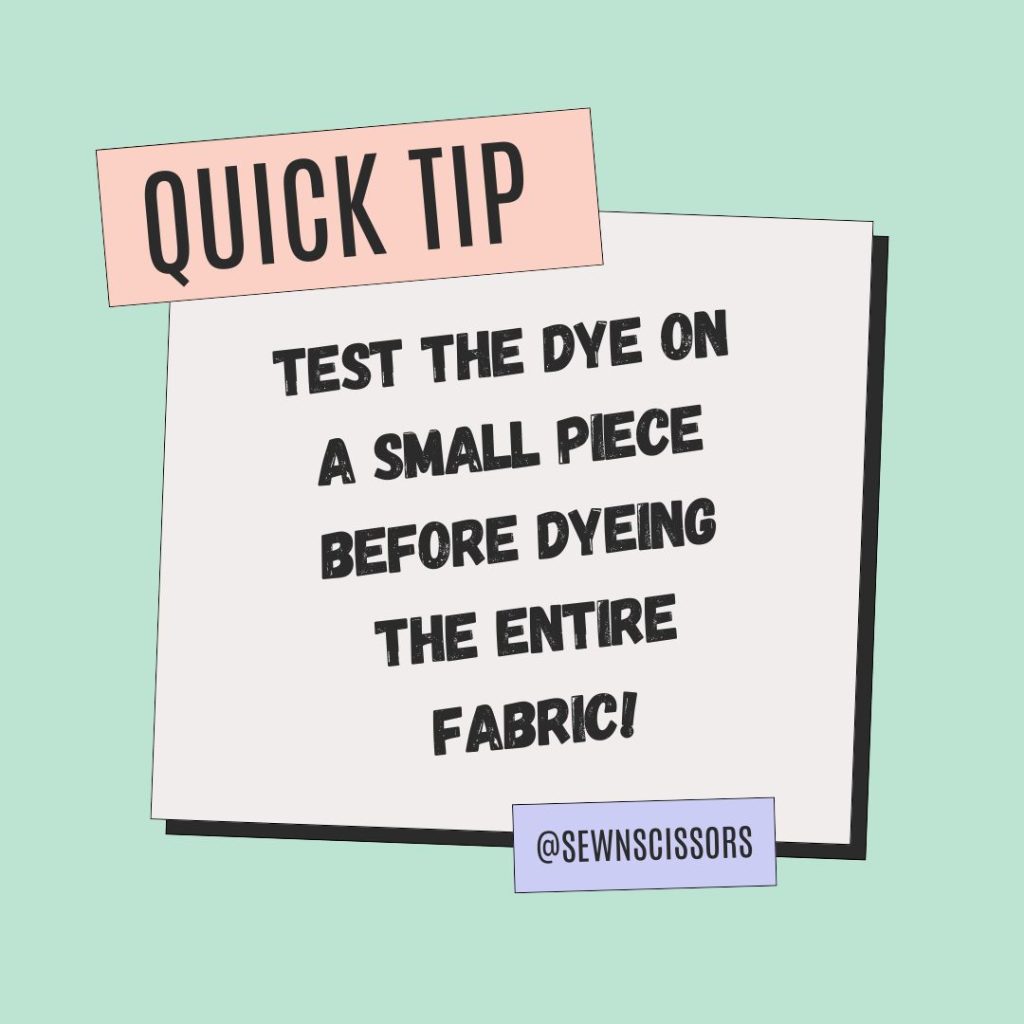
Best Dyeing Techniques for Chiffon
The dyeing technique varies based on the fabric composition, and it’s essential to understand the key differences to achieve the best results. In this section, we’ll explore the differences between dyeing synthetic and natural fabrics, natural vs. synthetic dyes, and tips for achieving the perfect shade on your chiffon fabric.
Synthetic vs. Natural Fabrics Dyeing
When dyeing polyester chiffon (a synthetic fabric) versus silk chiffon (a natural fabric), there are several important differences to consider. These differences mainly revolve around the dyeing process, temperature control, and the type of dye that works best for each fabric.
Polyester Chiffon (Synthetic Fabric):
- Dyeing Challenge: Polyester is a synthetic fiber, which makes it less absorbent compared to natural fibers. This means you need a special dye designed for synthetics, such as Rit DyeMore.
- Temperature Control: Polyester requires higher temperatures for the dye to properly bond with the fabric. The best method is usually stovetop dyeing at around 180°F (82°C).
- Dye Types: Use synthetic dyes specifically made for polyester to get the best results, such as Rit DyeMore or Dylon Permanent Dye.
Silk Chiffon (Natural Fabric):
- Dyeing Advantage: Silk is a natural fiber that absorbs dye more easily than polyester, leading to vibrant colors. However, it is also more delicate, requiring gentler handling.
- Temperature Control: Silk should be dyed in warm water (around 100°F or 38°C), ensuring the dye bonds effectively without damaging the fabric.
- Dye Types: For silk, acid dyes work best. These dyes bond with the silk fibers and provide deep, rich colors. Jacquard Acid Dyes are a popular choice for silk.
By understanding these key differences, you can select the right dyeing method for the fabric type you’re working with, ensuring vibrant and lasting results.
Use of Natural Dyes vs. Synthetic Dyes
When it comes to dyeing chiffon, you can choose between natural dyes and synthetic dyes, each with its own pros and cons. Both types of dyes can produce beautiful results, but the choice depends on your fabric, desired color, and sustainability preferences.
Natural Dyes:
- Eco-Friendly: Natural dyes are made from plant-based sources, minerals, and other natural elements like indigo, turmeric, and beetroot.
- Dyeing Process: Natural dyes require a more labor-intensive process. You’ll need to create a dye bath using the plant or mineral source, and often you’ll need a mordant (a fixing agent) to help the dye adhere to the fabric.
- Pros: Eco-friendly, creates unique, earthy tones, and can be a fun, sustainable choice for DIY projects.
- Cons: Less vibrant than synthetic dyes and may require more time and effort to achieve the desired color. The colors may also fade more quickly.
Synthetic Dyes:
- Vibrant Colors: Synthetic dyes, such as Rit DyeMore and Dylon Permanent Dye, are chemical-based and produce vibrant, long-lasting colors. These dyes are often the preferred choice for polyester chiffon.
- Dyeing Process: The process is generally quicker and easier compared to natural dyes. Synthetic dyes don’t require a mordant, and the colors typically set faster.
- Pros: More vibrant, consistent, and durable colors, especially for synthetic fibers like polyester.
- Cons: Less environmentally friendly and may not appeal to those seeking an all-natural process.
Which One to Choose?
If you’re looking for bright, rich colors that will last, synthetic dyes are your best option. However, if you prefer a more sustainable, earthy look and don’t mind a bit of extra work, natural dyes can give your chiffon fabric a unique and eco-friendly twist.
Tips for Achieving the Perfect Shade
Achieving the perfect shade when dyeing chiffon fabric can be tricky, but with a few pro tips, you can adjust the color intensity to match your desired outcome.
1. Adjust Dye Strength for Deeper Colors:
To get a darker or more vibrant color, you can:
- Increase the amount of dye in the solution.
- Soak the fabric for a longer period to allow the dye to absorb fully.
- If you’re dyeing synthetic chiffon, use the full bottle of dye for smaller pieces to achieve deeper, richer colors.
2. Achieving Lighter, More Subtle Hues:
For a lighter or pastel shade, consider:
- Diluting the dye solution by adding more water.
- Shortening the soaking time to avoid the fabric soaking up too much color.
- Test the color on a small fabric swatch to achieve the right shade before dyeing the entire fabric.
3. Color Mixing:
Mixing dyes can be a great way to create custom shades. If you’re using synthetic dyes, you can blend different colors to create unique hues. Test the mixture on a small swatch first to ensure the color is what you expect.
4. Setting the Dye:
To ensure the dye sets properly, it’s important to follow the instructions on the dye packaging for setting agents. For natural dyes, adding a mordant (like alum) can help fix the color. For synthetic dyes, setting the fabric in warm water for several minutes after dyeing can help the color stay vibrant.
Common Dyeing Mistakes and Troubleshooting
From uneven dyeing to color fading and stains, it’s important to understand the common issues that may arise and how to handle them. In this section, we’ll cover the most common dyeing mistakes and provide expert troubleshooting tips to help you achieve perfectly dyed chiffon every time.
Uneven Dyeing | Tips to Avoid Patchy or Streaky Results
One of the most frustrating issues when dyeing chiffon is uneven coloring, which can result in patchy or streaky areas. This problem is often caused by incorrect dyeing time, water temperature, or lack of movement in the dye bath.
How to Avoid Uneven Dyeing:
- Stir Continuously: While dyeing, it’s crucial to keep the fabric moving in the dye bath. Stir continuously to ensure that the dye reaches all parts of the fabric evenly. If you leave sections of the fabric still for too long, the dye may absorb unevenly, leading to streaks.
- Control Water Temperature: Each fabric type requires a specific temperature for the dye to adhere properly. Polyester chiffon needs hot water (around 180°F), while silk chiffon requires warm water (around 100°F). If the temperature is too low, the dye might not penetrate the fabric properly, causing uneven coloring.
- Timing is Key: Don’t rush the dyeing process. For synthetic fabrics like polyester, longer immersion times may be necessary to get a uniform color. For natural fibers like silk, a shorter immersion time ensures that the color doesn’t get too dark.
Color Fading | How to Prevent Colors from Fading After Washing
Once you’ve achieved the perfect color on your chiffon, it’s important to maintain the vibrancy over time, especially after washing. Color fading is a common issue, particularly with synthetic fabrics like polyester.
How to Prevent Color Fading:
- Use a Dye Fixative: After dyeing, it’s essential to set the dye using a fixative. A fixative helps bond the dye to the fabric fibers, making the color more resistant to fading. For synthetic fabrics, consider using a color fixative specifically designed for polyester. For natural fibers, use an acidic solution like vinegar to help set the dye.
- Hand Wash or Gentle Cycle: To protect the color from fading, always hand wash dyed chiffon or use the gentle cycle on your washing machine. Avoid harsh detergents that can strip the dye. Cold water washing is also a safer option to preserve color longevity.
- Air Dry: After washing, always air dry your chiffon fabric, preferably in the shade. Direct sunlight can fade the colors, especially for vivid hues, so avoid drying your fabric in strong sunlight.
Dye Compatibility | Troubleshooting Incompatible Dyes with Certain Fabrics
Not all dyes work well with every type of fabric. Using the wrong dye or dyeing method for your specific type of chiffon can lead to poor results, such as fading, uneven coloring, or damage to the fabric.
How to Ensure Dye Compatibility:
- Know Your Fabric: Before starting, make sure you’re using the correct dye for the type of chiffon you’re working with. For polyester chiffon, use synthetic dyes like Rit DyeMore or Dylon Permanent Dye. For silk chiffon, use acid dyes like Jacquard Acid Dye, which are specifically designed for natural fibers.
- Follow Instructions: Always read the dye packaging carefully and follow the manufacturer’s instructions. This includes water temperature, dye-to-water ratio, and dyeing time to avoid compatibility issues.
- Test Before Dyeing: If you’re unsure whether a dye is compatible with your chiffon, always test a small swatch first. This will allow you to see how the fabric reacts to the dye before committing to the entire piece.
Handling Stains or Dye Spots | Best Practices for Preventing and Cleaning Stains
Dyeing chiffon is a delicate process, and mistakes can sometimes lead to stains or dye spots on the fabric or surrounding surfaces. Whether the stain is from splashing dye or an uneven application, it’s important to know how to clean it up properly.
How to Prevent and Clean Dye Stains:
- Wear Gloves: Always wear protective gloves when dyeing chiffon to prevent dye from staining your hands and nails. This also minimizes the chance of transferring dye to the fabric or other surfaces.
- Protect Surrounding Areas: Use a plastic drop cloth or old towels to protect your workspace from dye splashes. Cover any countertops or floors where dye might spill.
- Clean Dye Spots Immediately: If you notice a dye spot on your fabric, act quickly to rinse the affected area with cold water. For stains on surfaces, use a mild detergent or a dye remover to clean the area before the dye sets.
- Fixing Dye Overruns: If a section of your fabric becomes overdye, you can carefully rinse the area with water to lighten the color. Be sure to do this gently to avoid damaging the fabric’s texture.
Conclusion:
In summary, dyeing chiffon fabric is both achievable and rewarding when you follow the right techniques for each fabric type. Whether you’re working with polyester chiffon, silk chiffon, or synthetic blends, understanding how each fabric reacts to different dyes and temperatures ensures you get the perfect result.
Remember: yes, you can dye chiffon! Just make sure to choose the right dye, test the color on a small swatch, and follow the recommended steps to avoid common mistakes like uneven dyeing or fading. By doing this, you’ll be able to transform your chiffon fabric into a beautifully vibrant piece, perfect for your next fashion project or DIY creation.




